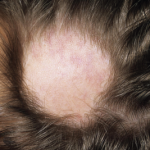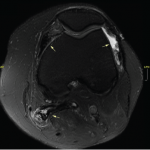“Interestingly, vitiligo patients with a comorbid disease have a later age of onset and a longer duration of vitiligo,” Dr. Boniface says. “Care providers have to be aware of these comorbid diseases’ association with vitiligo in order to screen patients for autoimmune diseases, including thyroid disease, symptoms for systemic lupus erythematosus, and neurologic diseases when indicated.”
Dr. Yen-Ta Chen from Taipei Veterans General Hospital in Taiwan, who has done similar research, told Reuters Health by email, “In our study conducted in easterners, the most common associated disease is alopecia areata, not the thyroid disease in westerners. In their article, they conduct the stratification by race and also stated that white patients suffered from less alopecia areata than black patients. Therefore, the racial discrepancies between white and colored-skin patients do exist and further support the finding in our previous research.”
Dr. Chen also supported screening patients with familial or extensive vitiligo for comorbid autoimmune diseases.

